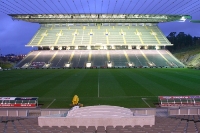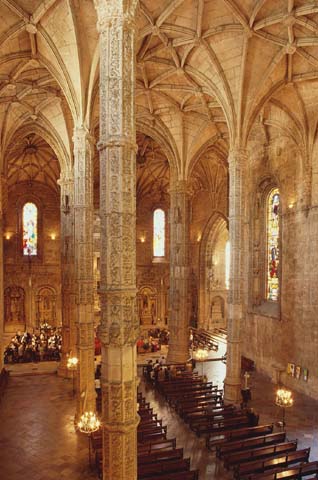 |
The
The
visionary and adventurous spirit of the Portuguese has left a deep mark
on Portuguese architecture. Whilst in the rest of 16th Century Europe,
the sober Gothic style dominated architecture, Portuguese architects
dared to bend the rules and, inspired by the Discoveries, invent the
«Manueline» style. Five hundred years later, right in the heart of the
21st century, names such as Álvaro Siza Vieira or Eduardo Souto Moura
continue to surprise the world with their daring and innovative
architectural projects.
-
The Past of Portuguese Architecture
- The Present of Portuguese Architecture
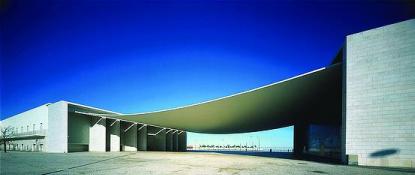
The Past of The Portuguese Architecture
The
history of Portuguese architecture is thus a happy union between the
past and the future. A past which includes Roman and Byzantine
inheritances, as witnessed by the Temple of Diana in Évora or the
Church of São Frutuoso in Braga which in the 11th Century showed us the
Romantic style, brought to Portugal by the monks of the Cluny order.
This style, traces of which are clearly evident in the cathedrals of
Braga, Porto, Lamego and Coimbra, remained in force until the early
years of the 13th Century.
Later, but still in that century, the
first lines appeared which gave rise to the Gothic style, this time
introduced by the monks of the Cister Order. Using the Catholic church
as the main design, these churches show large naves, ogival arches and
walls naturally illuminated by giant stained glass windows. The best
Portuguese examples of the Gothic style are to be found in the
monasteries of Alcobaça and Batalha.
With the Discoveries, the
Portuguese imagination was inspired by the sea which led to the birth
of the «Manueline» style. This was a development of the Gothic where
the Moorish influences were restored, along with Maritime themes which
provided ornamentations to constructions which included interwoven
ropes, cables, anchors or corals. This style, unique worldwide, is even
today a source of admiration, and as such it is no surprise that
monuments such as the Mosteiro dos Jerónimos and the Torre de Belém in
Lisbon, the Convento de Cristo in Tomar or the Monastery at Batalha are
some of the places most visited by tourists even today.

The
Renaissance style was brought from Italy and appeared in Portugal in
the middle of the 16th Century. The cathedrals of Leiria and Portalegre
are excellent examples of the style, as well as the Jesuit College in
Évora, or the Casa dos Bicos in Lisbon.
However,
this style rapidly gave way to another, Mannerism, which acquired
specific features of its own within Portugal and which would remain
until the beginning of the 18th Century. The royal of the Company of
Jesus was essential in the spread of Mannerism in Portugal, through
their order that the interior of churches should be ample and
homogenous and that the High Altar and pulpit were to be visible
throughout the church. Examples of such churches are the church of
Espírito Santo in Évora, the main chapel of the church of Jerónimos,
the church of São Roque, or the church of São Vicente de Fora in
Lisbon. Interior decoration is also extremely characteristic of
Mannerism: gold leaf, tiles and oil paintings which endow a magnificent
interior ambience, in counterbalance to the simple sober lines of the
buildings.
From the 17th Century until the middle of the
18th Century, the Baroque style was the predominant one in Portugal,
and it was in its ornamentation that this style had its true expression
in our country. The convent at Mafra is considered to be the best
example of the style, with its magnificent library, 88 metres in
length, but in addition to this there is also the Aqueduto das Águas
Livres, the church and stairs of Bom Jesus in Braga, or the Sanctuary
of Nossa Senhora dos Remédios em Lamego. The last two examples do in
fact show that they are a mixture of the Baroque and the Rococo (the
last phase of this style). 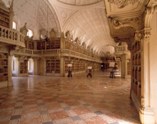
If
Rococo was the last stage of the Baroque, where it achieved its
greatest expression, to end up with a style which was extremely
ostentatious and opulent, the Neoclassic style which followed
represented a radical change. Its lines brought back sobriety and
elegance, as can be seen in the Monastery of Santa Clara-a-Nova in
Coimbra or the chapel of S. João Baptista in the Church of São Roque in
Lisbon. The Palácio da Ajuda in Lisbon is a good example of this
architectural style. After the devastation brought about by the
earthquake of 1755, Lisbon set about rebuilding itself, and entered the
19th century with its buildings showing off this new style.
Around
1830 Neoclassicism started to undergo alterations. Romanticism appeared
and brought some new features, mainly related to decoration, and with a
new sumptuousness being identified with the emerging upper bourgeoisie,
and this gradually established itself in high society.
With the
fall of the monarchy in 1910 and the subsequent period of internal
struggles present throughout the country, architecture in Portugal took
stock for a while and this was the situation when the «New State» of
the dictator Salazar came into being. This led to the emergence of an
architectural style which involved robust buildings and simple and
sober lines, known as «Suave Portuguese», with the designs of Cassiano
Branco being the trademark buildings of the style. The style was then
replaced by buildings more influenced by Art Nouveau, some of which
were designed by Ventura Terra.
From the 25 April 1974
onwards, Portugal has undergone major changes which have been reflected
in the new architectural styles which have emerged. A new generation of
architects flowered and spread the name of Portugal throughout the
world. Álvaro Siza Vieira is without doubt one of the most recognised
architects at the world level, and his works are visited, studied and
analysed in detail by both admirers and specialists. However, names
such as Eduardo Souto Moura, Gonçalo Byrne, Fernando Távora, Nuno
Teotónio Pereira, Carrilho da Graça and Manuel Salgado are essential
reference points within Portuguese architecture and also responsible
for the appearance of a new generation which is now starting to make
its presence felt, and seen. 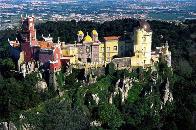
With
the fall of the monarchy in 1910 and the subsequent period of internal
struggles present throughout the country, architecture in Portugal took
stock for a while and this was the situation when the «New State» of
the dictator Salazar came into being. This led to the emergence of an
architectural style which involved robust buildings and simple and
sober lines, known as «Suave Portuguese», with the designs of Cassiano
Branco being the trademark buildings of the style. The style was then
replaced by buildings more influenced by Art Nouveau, some of which
were designed by Ventura Terra.
The Present of Portuguese Architecture
From
the 25 April 1974 onwards, Portugal has undergone major changes which
have been reflected in the new architectural styles which have emerged.
A new generation of architects flowered and spread the name of Portugal
throughout the world. Álvaro Siza Vieira is without doubt one of the
most recognised architects at the world level, and his works are
visited, studied and analysed in detail by both admirers and
specialists. However, names such as Eduardo Souto Moura, Gonçalo Byrne,
Fernando Távora, Nuno Teotónio Pereira, Carrilho da Graça and Manuel
Salgado are essential reference points within Portuguese architecture
and also responsible for the appearance of a new generation which is
now starting to make its presence felt, and seen. 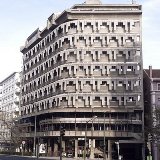
However,
names such as Eduardo Souto Moura, Gonçalo Byrne, Fernando Távora, Nuno
Teotónio Pereira, Carrilho da Graça and Manuel Salgado are essential
reference points within Portuguese architecture and also responsible
for the appearance of a new generation which is now starting to make
its presence felt, and seen.
